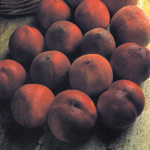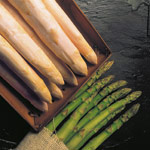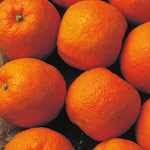products / citrics / clementines
VARIETIES
| Denomination | |
| Mioro copola | |
| Clemenules | |
| Clemenpons | |
| Orogrande | |
| Nova o Clemenville (HYBRID) | |
| Ortanique (HYBRID) |
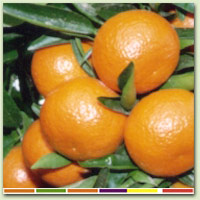 Mioro copola
Mioro copola
Type: Clementine
Tree: It is a hardy tree, rounded in shape and large.
Leaves: Dense foliage that is of a green colour that is not very dark.
Fruit: Its fruit is small to medium sized, usually weighs between 50 and 70 grams and has a fine skin of an intense orange colour. The pulp has extraordinary organoleptic characteristics due to its plentiful content of juice and its excellent compensation of sugars, acids and aromatic compounds. It is a fruit of extraordinary quality and is seedless when there is no pollination with other varieties.
It is an early variety and is gathered between November and January in the first season but can remain on the tree for some amount of time in good commercial condition. Treatments must often be carried out to improve its size.
It produces plentifully, but the small size of its fruit discourages cultivation; even so, due to its excellent organoleptic characteristics, it could be recommendable in those areas where soil conditions and climate favour an increase in its size.
 Clemenules
Clemenules
Type: Clementine
Origin: The Clemenules variety (Clementine de Nules or Nulesina) first appeared in Nules (Castellón) about 1958, through a spontaneous mutation that took place in a Fine Clementine plant. Due to its optimum performance, especially in production and fruit size although not in organoleptic aspects, it began to substitute the latter little by little until it has now become the most commercialised Clementine in Spain.
Tree: This tree is relatively hardy. As far as shape is concerned, it is rounded and displays inclining branches.
Leaves: Its leaves are large and light green.
Fruit: The fruit is big (80-100 grams) and rather flattened at the ends. Its skin is an intensely orange colour and its pulp is juicy, both being of excellent quality. It is easy to peel and practically seedless. It is gathered in the first season, from November to January, after the Oroval. The fruit tends to look puffy.
It originated as a spontaneous mutation of the Fine Clementine and was detected in 1953 in Nules (Castellón de la Plana). It is also known as Clemenules, Nulesina, Clementine Reina and Clementine Victoria. It is a productive variety and enters rapidly into production. It can be cultivated in almost all our production areas, although it is especially recommended for those with mid to late season harvests.
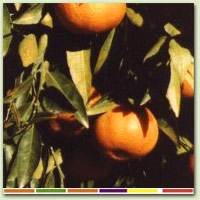 Clemenpons
Clemenpons
Type: Clementine
It originated from a mutation in Clemenules. The tree and fruit are very similar to the original variety, but it ripens 15 days earlier than the former.
Orogrande
Type: Clementine
Tree: It is hardy and of great initial growth.
Origin: The Orogrande Clementine originated in Murcia in 1978 as a consequence of a spontaneous mutation that occurred in the Clemenules tree (García Lidón et al., 1996). The organic matter, which was at that time called Oroval Gigante, was taken to the IVIA to be treated.
At that time it was named Oroval Gigante because it was said to greatly resemble the Oroval variety only with bigger fruit. However, later its name changed to its current name of Orogrande to avoid confusion.
Fruit: It is similar in size or somewhat larger than Clemenules, with a smooth peel and fewer essential oil glands. It has a high percentage of juice, which is, moreover, of great quality and seedless. It has the same sugar content as Clemenules, but the fact that it is less acidic permits it to be gathered earlier. The fruit degreens well and acquires good colour.
It produces rapidly. It originated by a mutation of Clemenules in 1978 in Murcia, but its blossoming is more clustered than the aforementioned.
 Nova or Clemenville (Hybrid)
Nova or Clemenville (Hybrid)
Type: Tangelo
Tree: It is hardy and well developed, with a rounded head and branches that tend to be inclined.
Leaves: The foliage is dense and of a light green colour.
Fruit: The fruit is medium to large in size, and round. Its skin is fine and somewhat difficult to peel. Its colour is deep orange. The pulp is firm and juicy, and its taste different than the Clementine but agreeable. It has a lot of very tasty juice.
It is seedless although seeds could appear due to cross pollination, especially with fruits of neighbouring trees in plantations of compatible varieties. The gathering time is between the first and second campaigns, as of December, when the fruit has reached a deep reddish-orange colour and the correct texture.
It is also known as Clemenville. It is a hybrid between Fine Clementine and Tangelo Orlando obtained by Gardner and Bellows in Florida in 1942. It is productive and can be grown in most of our citrus producing areas, exhibiting excellent quality in warm zones.
Ortanique (Hybrid)
Type: Tangor.
Tree: Very hardy, big and open-headed growth.
Fruit: It is large, blunt pointed and of a deep orange colour. In the style zone there is a small navel and a characteristic aureole. The peel is wrinkled, sturdy and sticks to the flesh. This flesh is orange coloured, tender, juicy and has seeds when pollinated.
It has a high content of tasty juice of good organoleptic characteristics. It ripens late, in March, and its fruit holds very well on the tree. It stays well preserved in cold storage, and withholds transport well.
It is known by different names (Topaz, Tambor, Mandora, etc.). It was first found in Jamaica and its origin is not clear although some believe it is a Tangor (hybrid of a Mandarine and Sweet Orange). It was introduced into Spain in 1971 and produces abundantly.
The great disadvantage of the Ortanique is the difficulty entailed in peeling it by hand, since the skin adheres strongly to the flesh and much essential oil is released.
